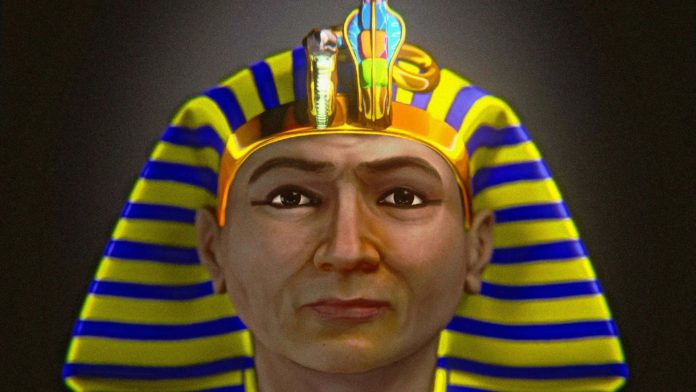The Incredible Resurrection of Amenhotep I: Egypt’s Pharaoh Rediscovered After 3,500 Years
For the first time in millennia, the living face of Pharaoh Amenhotep I—the ruler who reshaped ancient Egypt—has been unveiled, offering us a glimpse into the distant past that many thought lost forever. This magnificent re-creation not only highlights his legacy but also marks a significant milestone in archaeological research.
Amenhotep I: The Pharaoh Who Brought Prosperity
Amenhotep I, revered as one of the most significant rulers of ancient Egypt, reigned during the 16th century BC, ushering in what many historians describe as the “golden age” of the New Kingdom. Under his leadership, Egypt experienced a remarkable surge in wealth, culture, and military prowess. His achievements solidified the foundations that would elevate Egypt’s power on the world stage.
This pharaoh was not just a king; he was a visionary. Amenhotep I is often credited with initiating the construction of the Valley of the Kings, a site that housed the tombs of many subsequent pharaohs and became a burial ground blanketed in myths and treasures. His contributions to art and science flourished during his reign, significantly influencing future generations.
The Pharaonic Face Revealed: A Look at Amenhotep I
Using advanced technology, scientists have reconstructed the visage of Amenhotep I for the first time in over 3,500 years. This groundbreaking work was spearheaded by Brazilian graphics expert Cicero Moraes, who painstakingly used imaging techniques to create an accurate representation based on the pharaoh’s skull.
“We utilized CT scan data from living donors to understand how the thickness of the soft tissues would reveal the probable shape of Amenhotep I’s face,” says Moraes. The intricate blend of scientific methods and artistic interpretation resulted in a lifelike bust that distinguishes him from the often idealized portrayals found in ancient statues.
Insights into the Pharaoh’s Life
Amenhotep I is believed to have stood around **5 feet 6 inches tall**, with well-preserved teeth and curly hair, according to experts. Beyond his physical attributes, archaeological findings suggest that he suffered from conditions like retrognathism, an overbite that traditional statues often overlook. By consulting various research studies, Moraes and his team were able to present a more authentic depiction of the ancient ruler.
Dr. Michael Habicht from Flinders University notes that while the **2021 study**, which virtually unwrapped Amenhotep I’s mummy, did not ascertain a cause of death, it highlighted he likely died around the age of 35. It’s fascinating how even in his short life, the pharaoh made profound impacts that would resonate through the ages.
The Valley of the Kings: A Historical Treasure Trove
Located near Luxor, the **Valley of the Kings** is an iconic archaeological site and the final resting place for many of Egypt’s most powerful rulers. This valley served as the burial ground for pharaohs from the **18th to the 20th Dynasties**, showcasing elaborate tombs filled with priceless artifacts intended for the afterlife. It’s a treasure trove of knowledge that continues to shape our understanding of ancient Egyptian culture.
Recognized as a **UNESCO World Heritage Site** since 1979, the valley has captured the imaginations of archaeologists and visitors alike. Its significance extends beyond tombs to the mysteries of ancient kingship, rituals, and the legacy of a civilization that saw itself as a divine intermediary between the gods and the people.
Dedication to Collaborative Discovery
Moraes, acknowledging the collaborative effort involved in the recreation of Amenhotep I, emphasizes that this achievement wouldn’t be possible without the dedicated efforts of Egyptologists like Sahar Saleem and Zahi Hawass, whose research laid the groundwork for this study. Their collective work highlights the importance of continuously sharing knowledge to unlock the mysteries of the past.
With plans to publish their findings in a scientific journal, the team hopes to inspire further dialogues about the monumental figures of ancient Egypt and the rich narratives interwoven with their legacies.
Conclusion: A Legacy Resurrected
Amenhotep I’s remarkable resurrection not only enriches our understanding of his reign but also serves as a reminder of the profound influence ancient Egypt has had on civilization. The face of this iconic pharaoh stands as a testament to the incredible advancements in technology and the tireless pursuit of knowledge that continue to break the barriers of time, allowing us to connect with our past in ways once thought impossible.
This thrilling revelation invites all of us to explore the myriad stories that Egypt holds within its sands, reminding us that each discovery sheds light on the shared history and heritage that binds humanity together.

